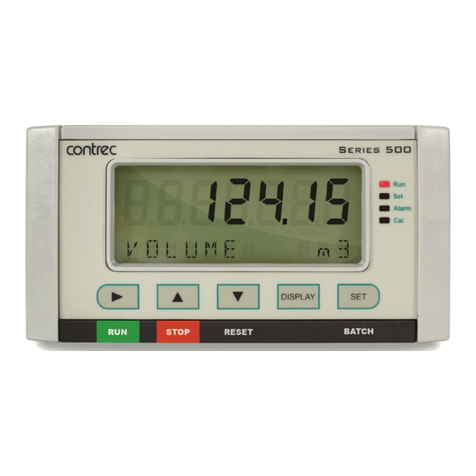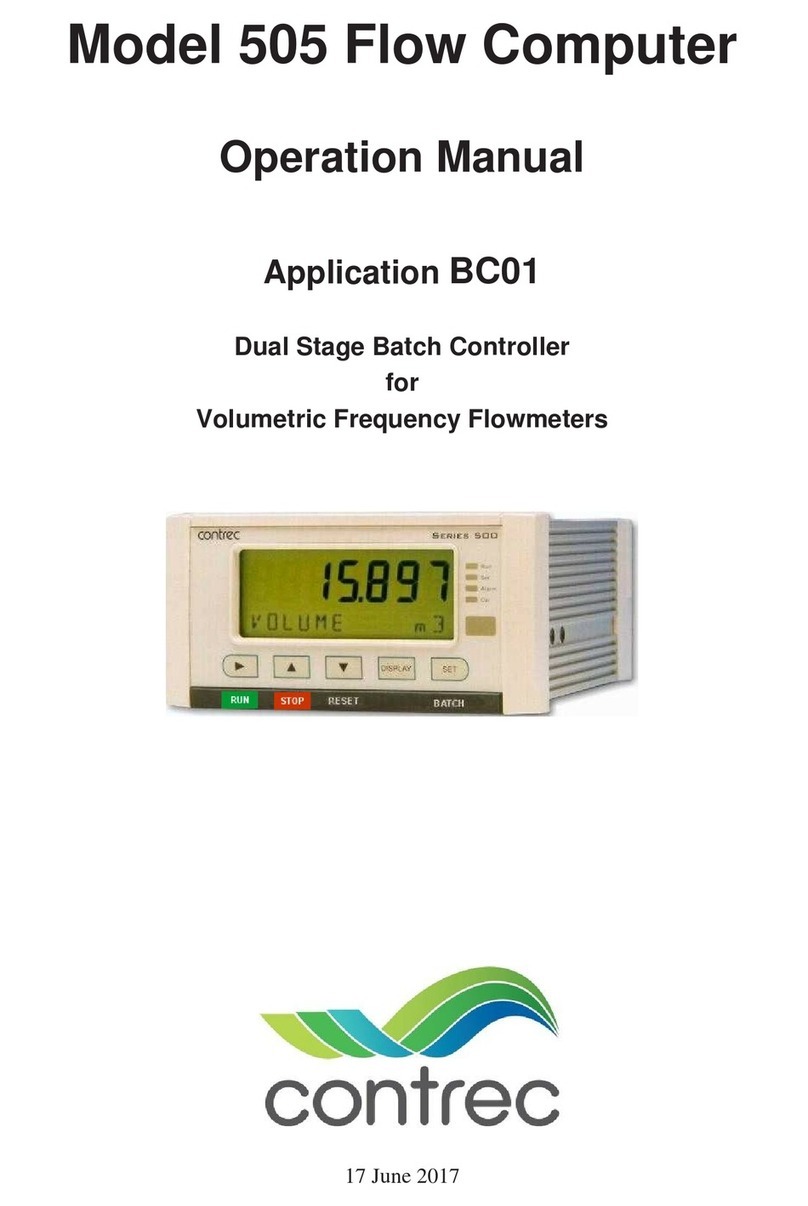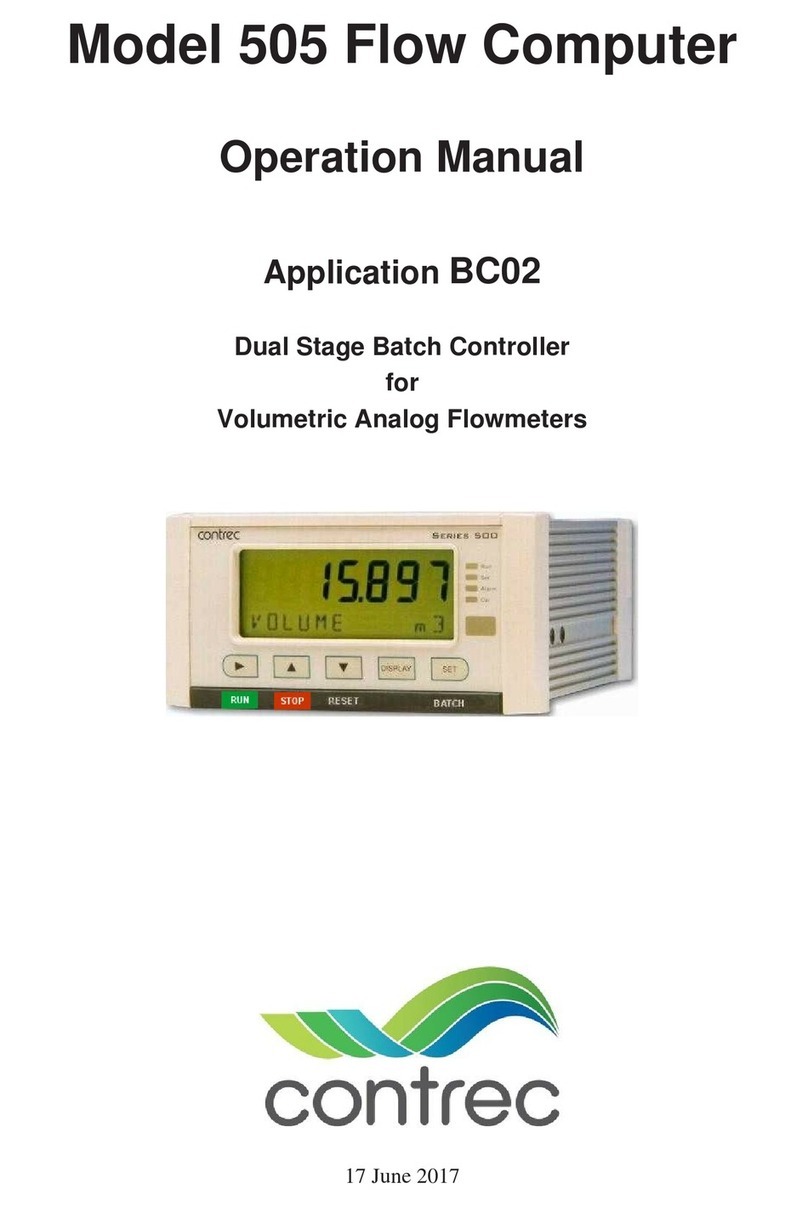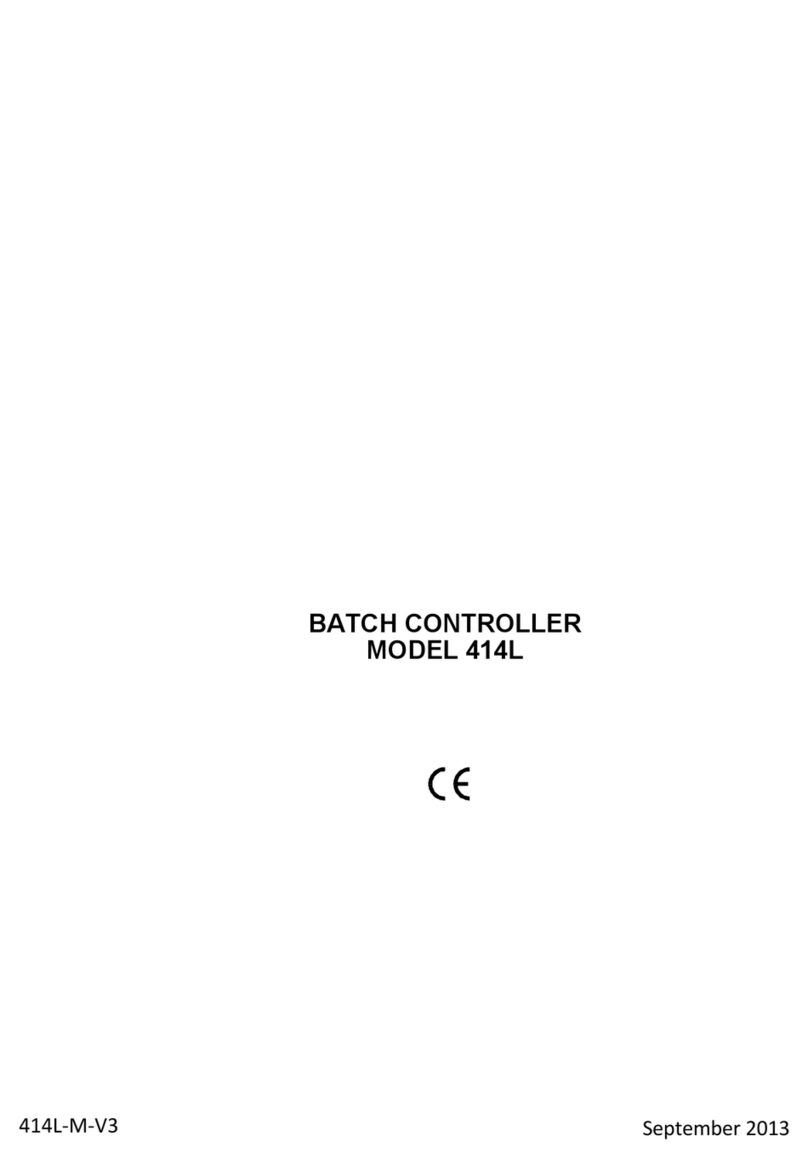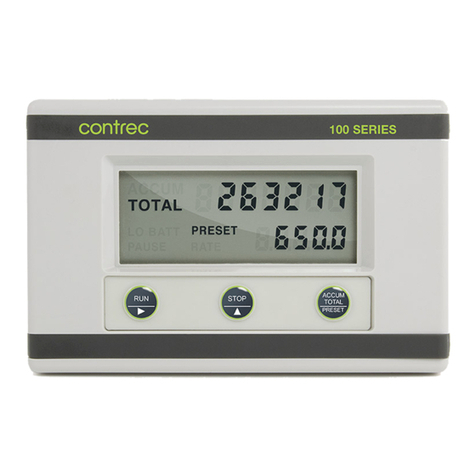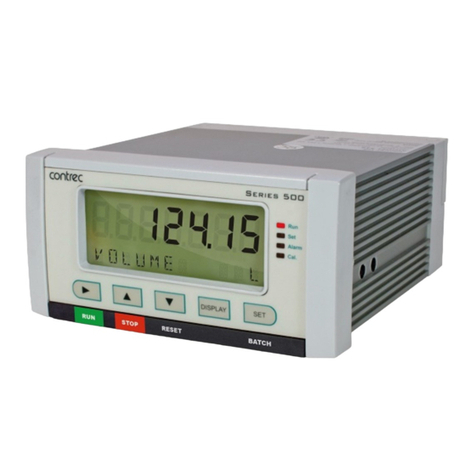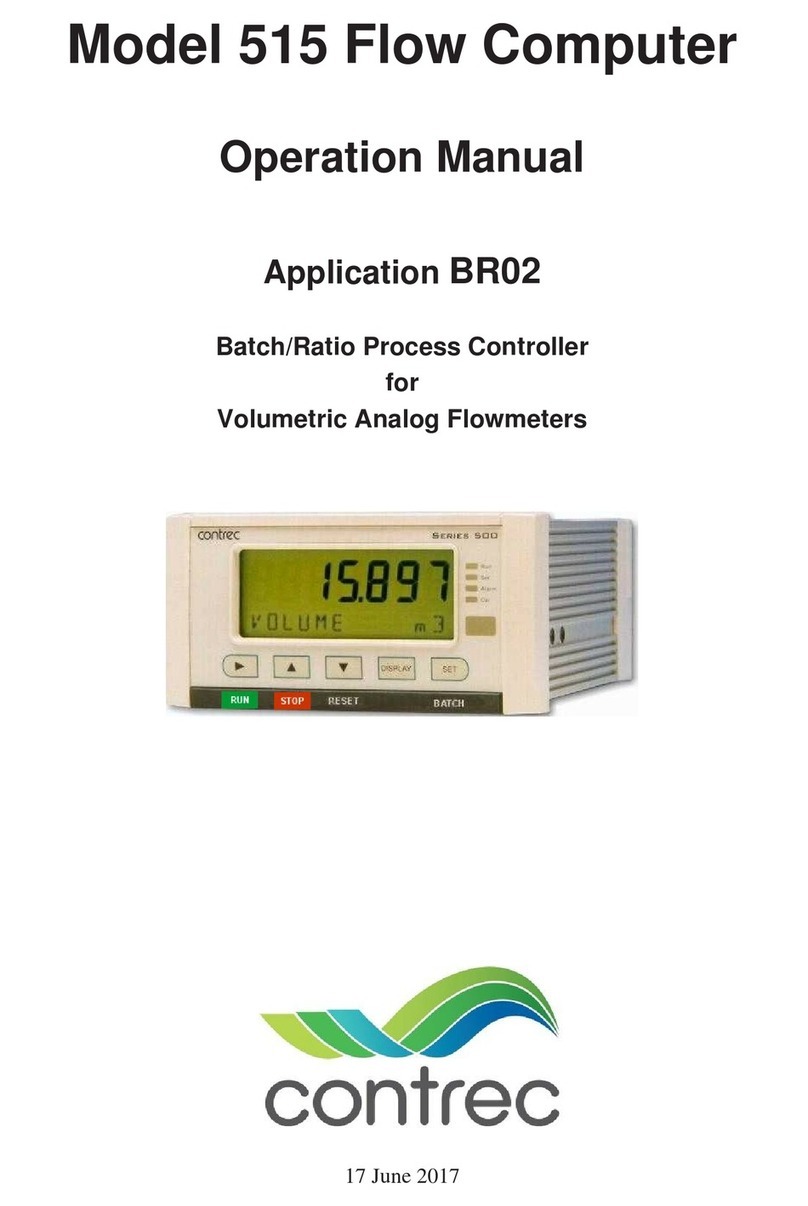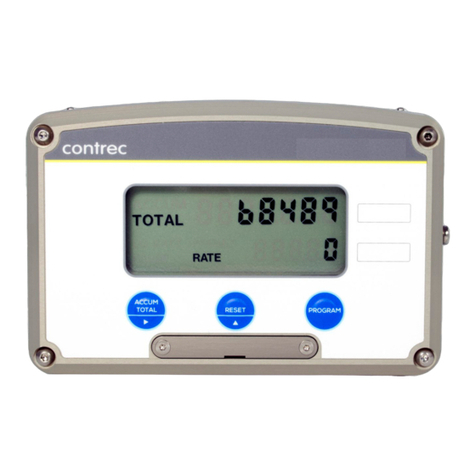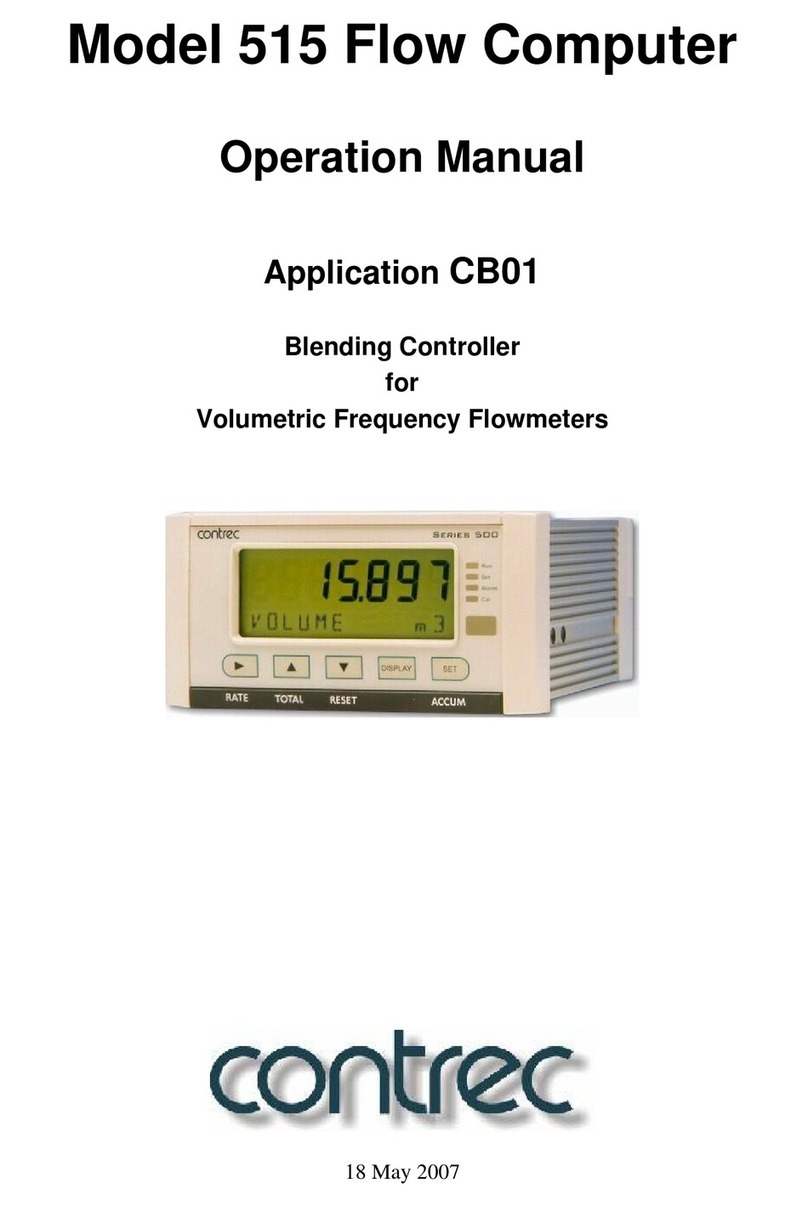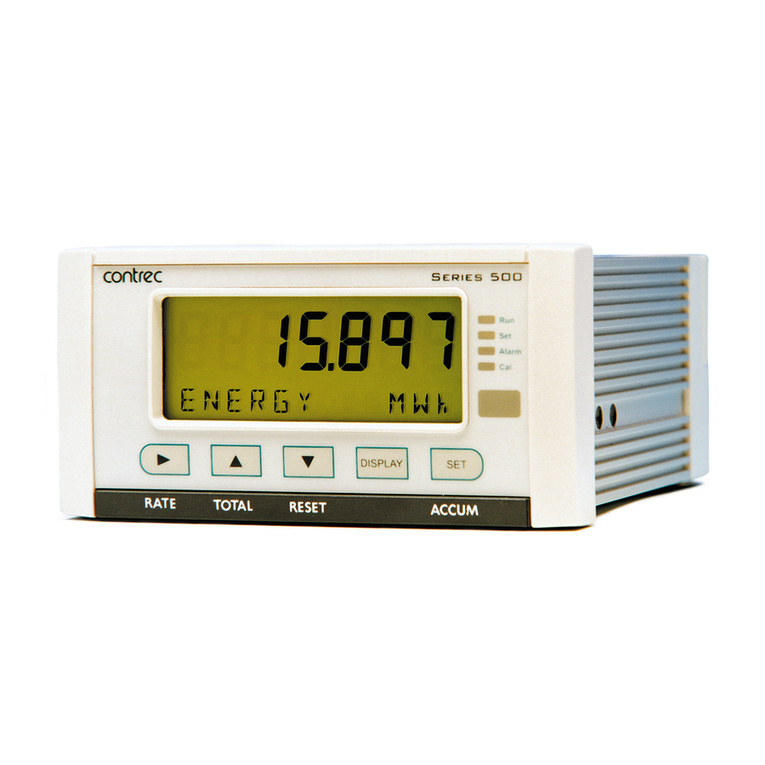
3.1 FRONT PANEL OPERATION
The four key operation of the Batch Controller is straight forward.
SETTING THE BATCH QUANTITY
The Batch quantity is programmed as follows:
Switch Action Display Comments
Press BATCH SET Batch "Batch" is displayed for one second
followed by the batch quantity last
entered. The Batch Set LED lights.
"1"2345 The most significant digit flashes
indicating that it can be changed.
Press "2"2345 Pressing the DISPLAY key will
increment the digit. The up arrow on
the Display key indicates to increment
digit.
Press 2 "2"345 Pressing the RUN key will change digit
and enables the next digit to be
incremented. The right arrow on the
RUN key indicates to change digit.
Press BATCH SET Set Once the desired number is entered,
press the BATCH SET key to return to
the Run mode. The Batch Set LED will
extinguish.
Once programmed, the Batch quantity will be retained in the non-volatile
memory and will not alter until changed by the user.
8Operation
